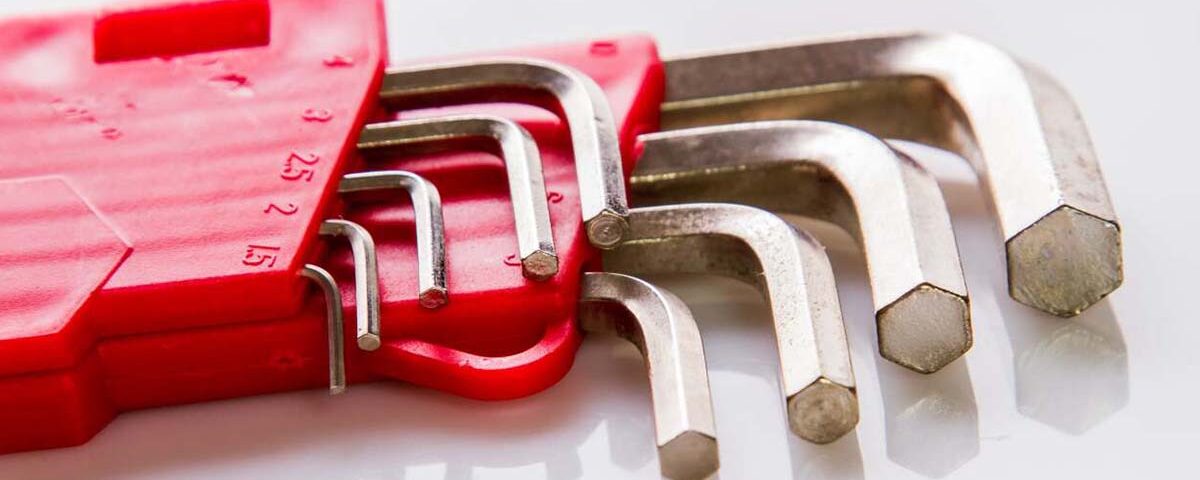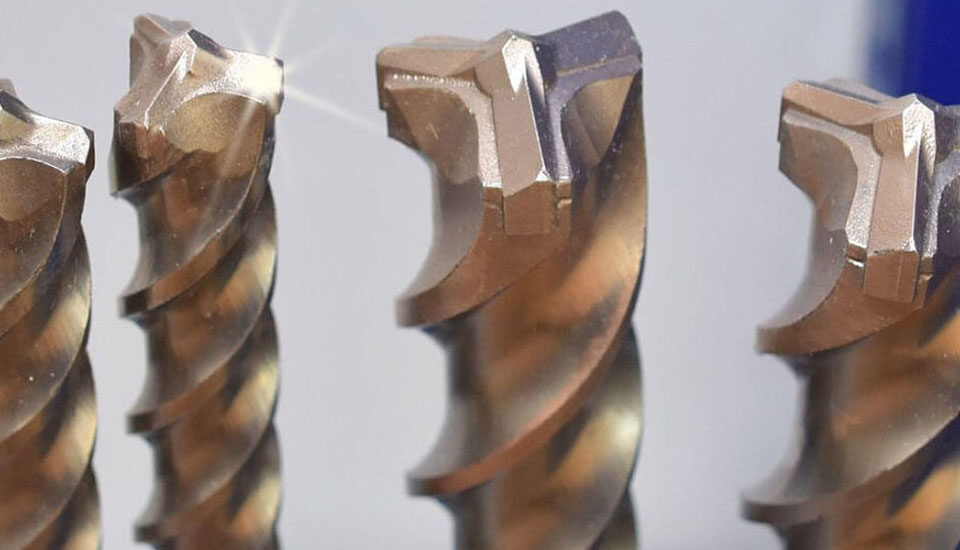How to choose the size of Allen wrench?

What is an allen wrench?
Allen wrenches, named after the Allen manufacturing company that invented them, are “L” shaped tools. An Allen wrench is a tool that is used to provide tight connections and torque hexagon-shaped screws, or to turn these screws to open or close them. They consist of a long arm and a short arm, both of which have the same head size. These types of screws and screwdrivers have hexagonal holes in their heads, which are used to prevent the wrench from slipping off the head of the screw and to gain more control over the screw
Choosing the size of allen wrench
Below is some general information about Allen wrenches:
Structure and design:
Allen wrenches are often made of stainless steel, alloy steel, or aluminum. The head of the Allen key is hexagonal and its size corresponds to the size of the screw head.
Sizes:
Allen wrenches are available in various sizes, each made and used for a specific size of the corresponding screw head diameter.
Common Allen wrench sizes are millimeters and inches.
Applications and benefits:
An Allen wrench is used as a hand tool, especially in various industries including construction, machine building, electronics, and automotive repair. This tool is used to tighten and torque Allen screws. There is more precise control than normal wrenches due to the hexagonal structure of their screw heads. They have higher power and efficiency in applying torque on screws. These wrenches do not slip due to the hexagonal structure of the screw head.
Maintenance and use:
To use the allen wrench optimally, it is important to choose the right size for the screw head size. Regular and clean maintenance of Allen wrenches will increase their useful life.
Smaller Allen wrenches require more maintenance than larger ones. Before placing the Allen key on the screw, clean it and align it properly on all six sides.
What are the sizes of Allen’s pickle?
There is a wide range of Allen wrenches for different jobs. Usually, each of the manufacturers of Allen wrenches provide a set of these wrenches in a set like a set of keys for the customer to buy.
It is better to choose the right size of the allen wrench carefully to prevent screw damage or damage to the wrench. In the following, we describe more detailed methods for choosing the right size of Allen wrench:
- Use a conversion table: Many Allen wrench tool manufacturers provide conversion tables that convert screw sizes to the corresponding Allen wrench sizes. For example, if you know the diameter of the screw, you can look up the conversion table and find the right wrench size.
- Using a screw sample: If the desired screw is available, take a sample of it to the dealer or tool sales center and get the appropriate wrench. The seller can provide you with the correct size of Allen wrench with his experience.
- Using the length of the screw: often in the description of screws, the length of the screw is also mentioned. If you can measure the length of the screw, you can choose the right size Allen wrench according to its length. Usually, the length of the screw is proportional to the size of the Allen wrench.
- Using a measuring tool: If you have a measuring tool such as a ruler or a caliper available, you can measure the diameter of the screw and choose the right size Allen wrench based on that. Screw diameter is usually measured as the width of the screw strip.
- Using the markings on the screws: Some screws have markings on them that indicate the size of the allen key required. These signs are usually specified as numbers or letters.
By choosing the right size Allen wrench, you can use a better tool to do your work and avoid screw or wrench damage. Also, it helps you to do things more accurately and efficiently.
Conversion table and allen wrench sizes:
This table is based on the size of the screw (the width of the screw strip) to the size of the corresponding Allen key:
| Screw size (diameter of the screw strip) | Allen wrench size |
| 1.5 mm | 0.05 inch |
| 2 mm | 0.06 inch |
| 2.5 mm | 0.07 inch |
| 3 mm | 0.09 inch |
| 4 mm | 0.11 inch |
| 5 mm | 0.14 inch |
| 6 mm | 0.16 inch |
| 7 mm | 0.18 inch |
| 8 mm | 0.20 inch |
| 10 mm | 0.25 inch |
| 12 mm | 0.30 inch |
Note that depending on the country and standard, the sizes may be slightly different. This table is a general guide for choosing the right size Allen wrench, and in some cases, you can refer to the manufacturer’s instructions to be sure.
What are the markings on the screws related to the Allen key?
Usually, the markings on the screws are used to show the size and type of the screw. Following are examples of common markings on screws:
-
Numerical signs:
Example: 3, 4, 5, 6, etc
- These marks are displayed as a number on the head of the screw, which refer to the diameter of the screw band.
-
Alphabetical signs:
Example: M3, M4, M5, etc
The letter “M” means metric and the number after it shows the diameter of the screw tape.
-
Combined signs:
- Example: M6x1, M8x1.25, etc
In these signs, the first number indicates the diameter of the screw tape and the second number indicates the number of knots per inch.
-
ISO numbering signs:
Example: ISO 4014, ISO 4017, etc
The ISO standard uses a specific numbering for all types of screws.
-
Abbreviations:
- Example: UNC, UNF, BSF, BSW etc
- These signs refer to specific standards for screws.
Using the marks on the screws will help you to identify the size and type of the screw without exact measurements and choose the right size Allen wrench for it.
In general, you need to be careful in choosing the Allen wrench you need, and if you buy a cheap set, the small ones may not be very accurate in their measurements, meaning they fit in the size bolts. They do not work by themselves. Also, swapping sizes is never recommended, as doing so can damage the screw head and force you to replace it.



